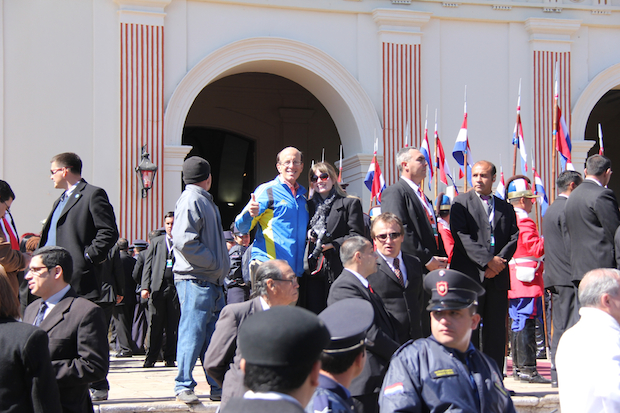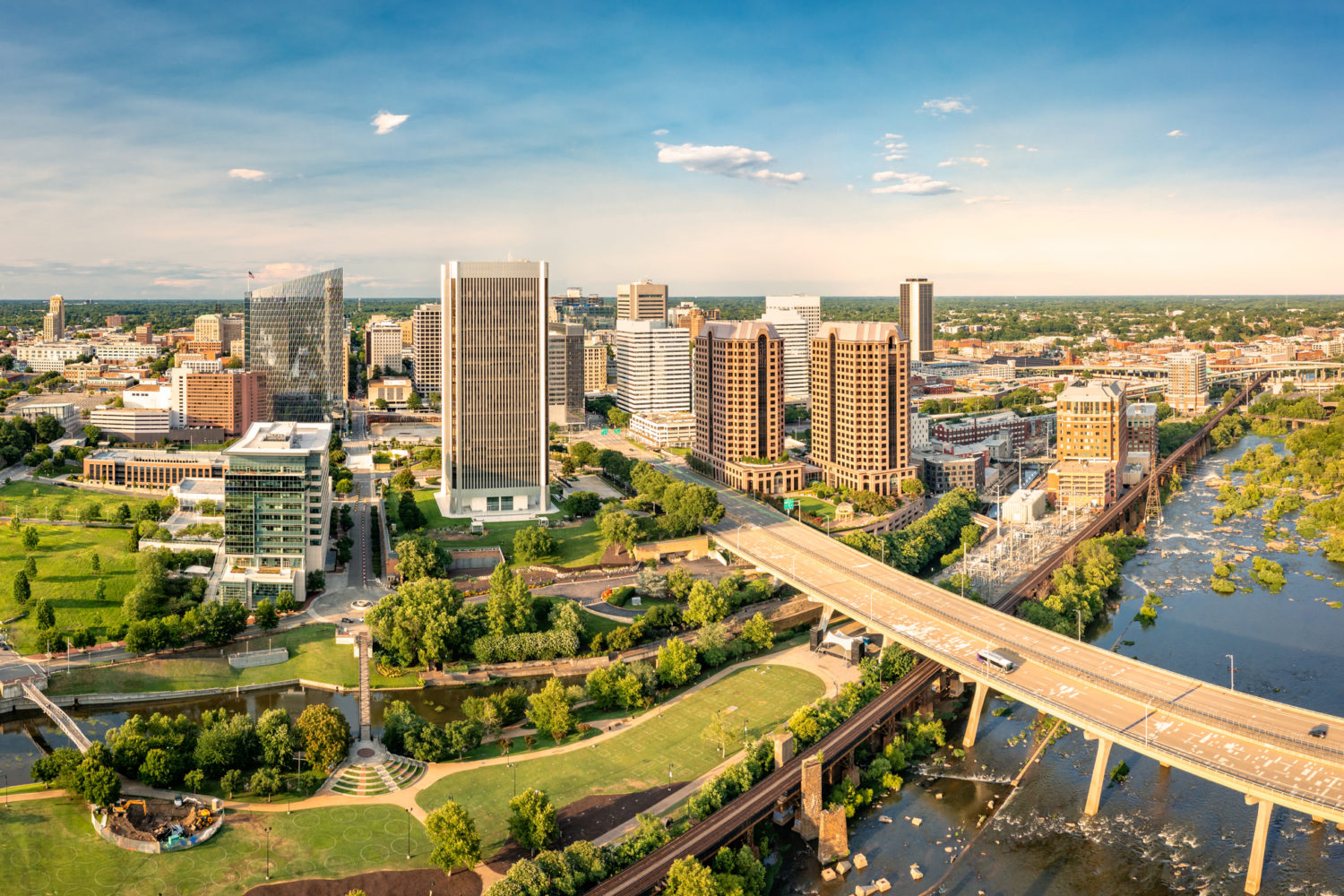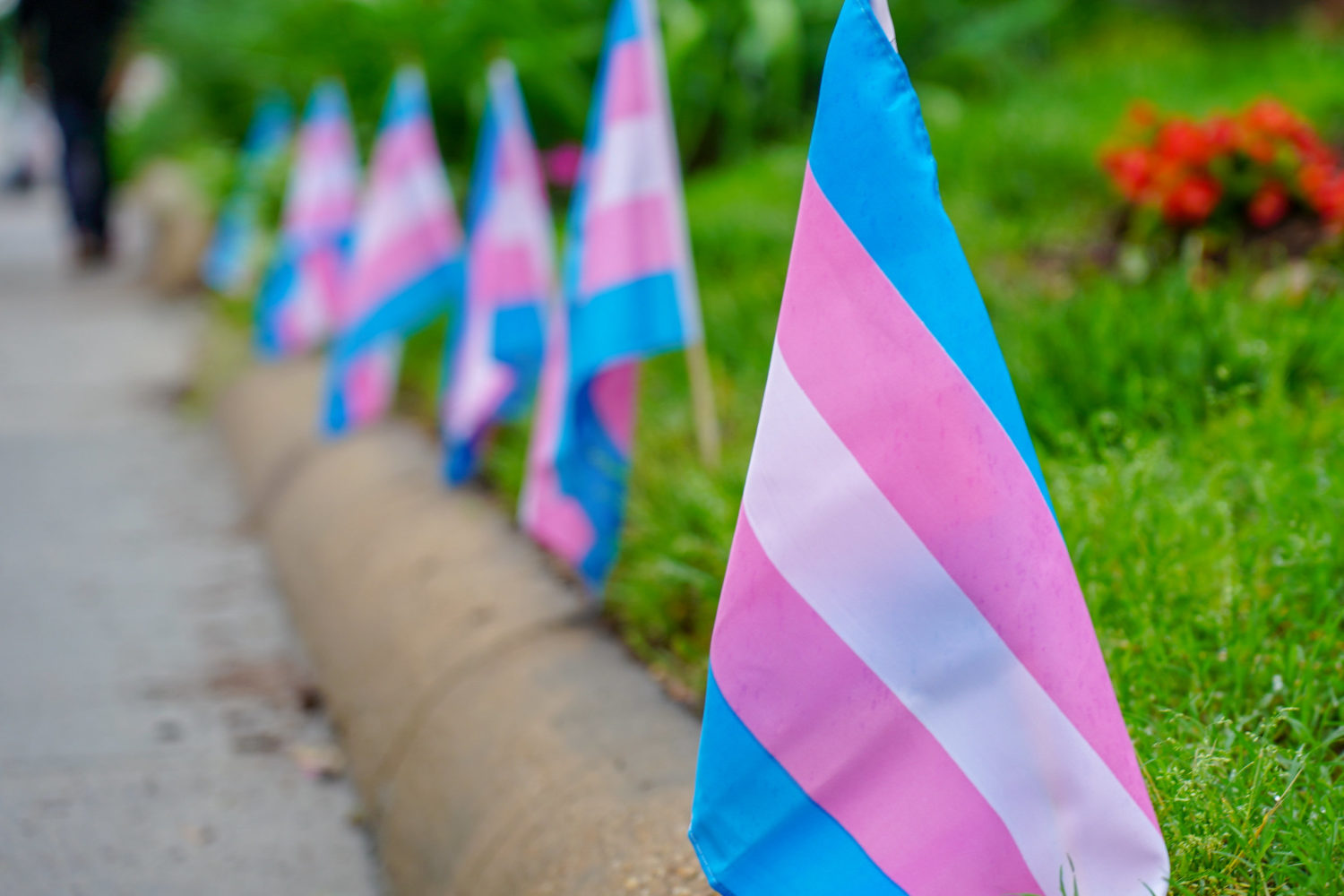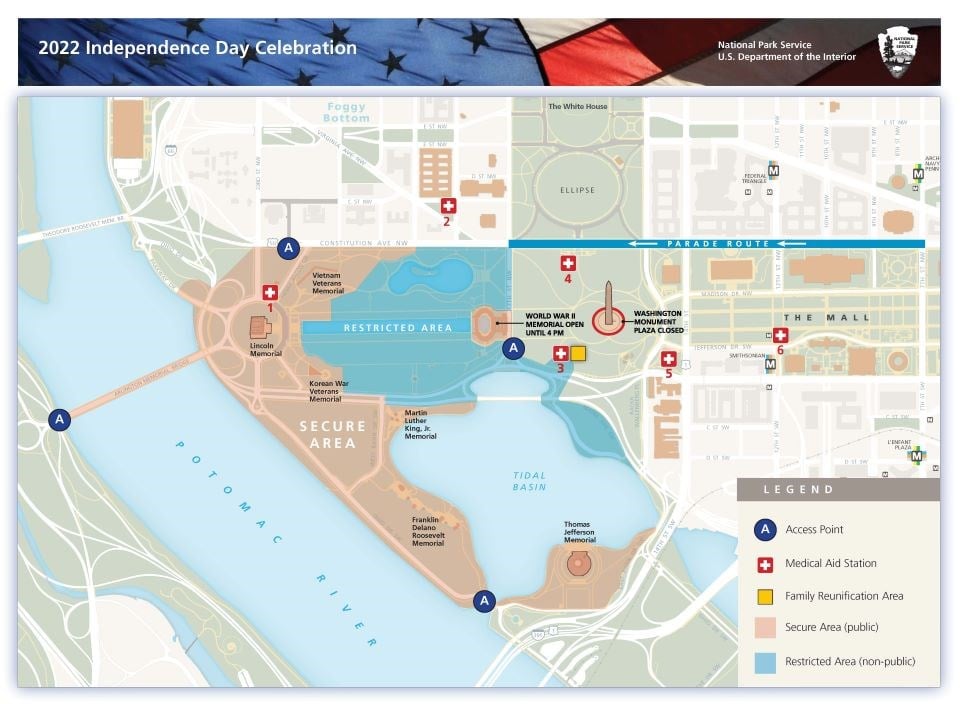My mid-August business trip to Asunción, Paraguay, was well timed. A Washingtonian since the Reagan era and veteran of numerous American Presidential inaugurations, I was thrilled to learn that I would be in Asunción when the newly elected President was set to be sworn in—August 15—a day that marks the founding of Asunción in 1587 by Juan de Salazar y Espinosa. I would witness my first foreign Presidential inauguration in a South American country that seeks to strengthen its bilateral relationship with the US.
I had been to South America several times before, mostly to Argentina and Brazil, which both border Paraguay. But this was my first trip to Paraguay, where 6.7-million people live on a piece of land about the size of California. Until this trip, I had only known Paraguay through the eyes of two friends who had been Peace Corps volunteers there, and I’d heard mostly of the warm and hospitable nature of the Paraguayan people.
New President Horacio Cartes—a well-known businessman—was not involved in politics until he joined the right-center Colorado Party in 2009. He had studied and worked in the US, and his business background turned out to be of significant appeal to voters. His running mate, now Vice President Juan Afara, whom I had the honor of meeting during my stay there, comes from a farming background and was the popular Governor of Itapúa. In the US, they would have been considered a “dream ticket.”
The night before the inauguration, I asked my colleagues from Paraguay and Argentina if they would be attending the President’s swearing-in. For various reasons, I was the only one who decided to go. I’d been warned about the traffic (nonexistent), the security (nothing like ours), the crowds (quite small compared to those in Washington), and the weather (brisk but sunny—a perfect day nothing like January on the Mall).
I took an early taxi from my hotel, no official ticket in hand, and headed off for a once-in-a-lifetime experience. The friendly driver sped past the official Presidential parade-reviewing stand, much simpler than the Washington version of Fort Knox that marks our inaugural days. We saw a small group of opposition demonstrators, whose low-key protest felt nothing like a DC political protest. When we could go no further due to restrictions, I jumped out and made my way toward a young couple with camera equipment, hoping they could direct me to the swearing-in.
Good fortune struck in meeting these new friends. Marcos, a graphic designer, had media-photographer credentials and Biera, a specialist in university accreditation, was planning to take pictures, too. They invited me to tag along, and I was delighted to.
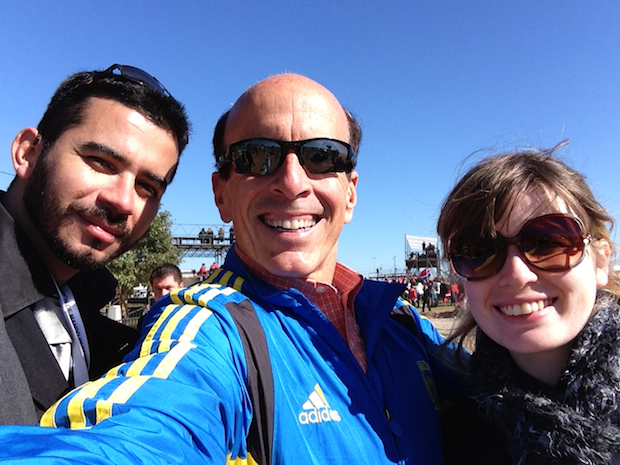
Marcos entered a highly secured area, and Biera led me to an excellent viewing spot. She translated the speeches and proceedings into flawless English. (In addition to Spanish and English, Biera speaks Guarini, the country’s native tongue, as do most Paraguayans. I find this impressive, given that its American equivalent would be something like the residents of southeastern Massachusetts speaking the language of the native Mashpee Wampanoag tribe in 2013.)
Biera’s family had emigrated from Russia as “White Russians,” anti-Communist and pro-Czar, and Marcos had Italian and Spanish roots. Other locals I met that day had families originally from Lebanon, Germany, and China. It turns out that Paraguay, like the US, is an ethnic melting pot. And unlike the US, Paraguay has historically integrated and appreciated the natives who were there before the Spanish. Also interesting, the country maintains ties with Taiwan and has excellent Chinese restaurants.
On inauguration day, the red, white, and blue Paraguayan flag and the red flag of the Colorado Party were everywhere. Colorado party supporters in the streets were exuberant. The crowd was bursting with national pride, like we do at such events, but the military pomp and circumstance alongside the native cultural ambiance was much more noteworthy than it is during our inaugural productions.
The Presidents of Brazil and Argentina arrived approximately 18 minutes late to the President’s swearing-in. The Paraguayans were not pleased, and the media was sharply critical of this affront the next day. To make matters worse, at the end of the prayer service hours later, Argentine President Kirchner could be seen on her cell phone, ignoring calls for her attention from the crowd. To put it lightly, she and Brazil’s President, Dilma Rousseff, are not aligned with the new Paraguayan President. I’m told that the Presidents of other nearby countries Bolivia and Venezuela were not invited to the inauguration.
During his inaugural speech, Paraguay’s new, charismatic, youthful President told the crowd: “You are not the future, you are the present.” He emphasized: “Paraguay is a rich country with poor people, and that has to change…this is the government of opportunities.” He quoted Pope Francis I, who said “Paraguayan women are the strongest in South America,” to thunderous applause.
The crowd was electric. Many people I spoke with that day believe Paraguay is positioned to be the next global boom economy, given its new leadership, the human capital of the population, and the country’s significant potential in such sectors as agriculture and energy.
After the ceremony concluded with a song by Biera’s aunt, I joined Marcos and Biera in a trek by the new Congress building, the old Congress building, and many other architectural gems, on our way to the Catholic cathedral for the prayer service. I was struck by the number of military groups dressed in colorful uniforms and helmets (with artfully designed monkey tails) that lined the road and by the order of the crowd. I even had the chance for a brief visit with Frank Sanchez, our Under Secretary of Commerce, who was part of the official US delegation sent to Asunción by the White House.
Biera and I followed Marcos, covered in press credentials, into the cathedral area without being stopped or questioned once. Maybe it helped to have on a Boston Marathon jacket and to be taking photos (with my iPhone) alongside an official photographer. I had somehow made my way into the center of the action on this historic day, and it dawned on me how Forrest Gump or Zelig (from the Woody Allen movie) must have felt.
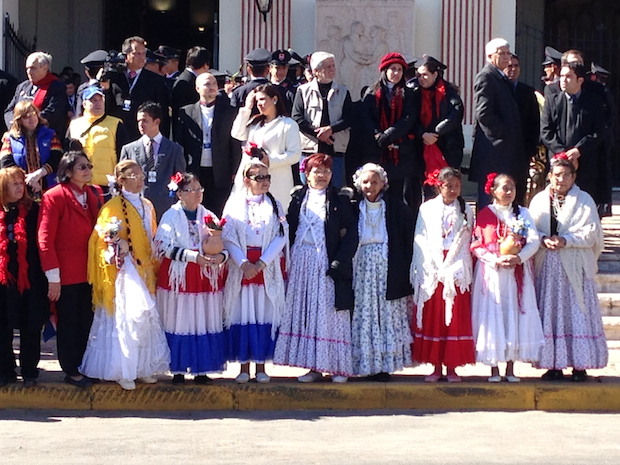
At the steps of the cathedral, older women stood in traditional dress ready to greet the Presidential motorcade. Most of the women who entered the cathedral were exceedingly elegant—they would have looked at home on the red carpet on Oscar night in Hollywood. Just a single line of security flanked the arriving VIPs on each side of the cathedral steps. Biera and I stood close to Prince Felipe of Spain and the incoming line of Presidents (from Argentina, Brazil, Uruguay, Chile, and Peru) as they went solemnly into the cathedral after arriving on buses, not in limousines.
Argentine and Brazilian media reported back to Buenos Aires and Rio. An en
tourage of Arab diplomats appeared. We met senior officials from the foreign ministry. The Vice President arrived to much acclaim, followed by the President and his daughter in an open, antique, white convertible that once belonged to the right-hand man of longtime dictator, Alfredo Stroessner.
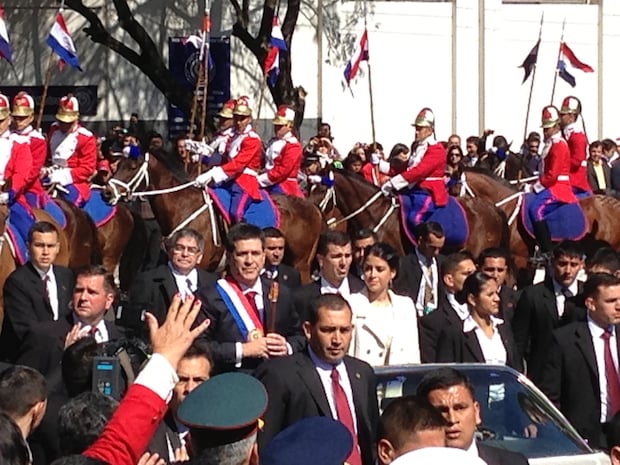
The President wore a formal sash in Paraguayan colors across his chest. The crowd was ebullient at his arrival, and he relished their praise. The parade of military uniforms on horseback was a true spectacle. Catholic priests, nuns, and monks were everywhere. It was as if I had been transported back to another era. And the military show continued during an official parade.
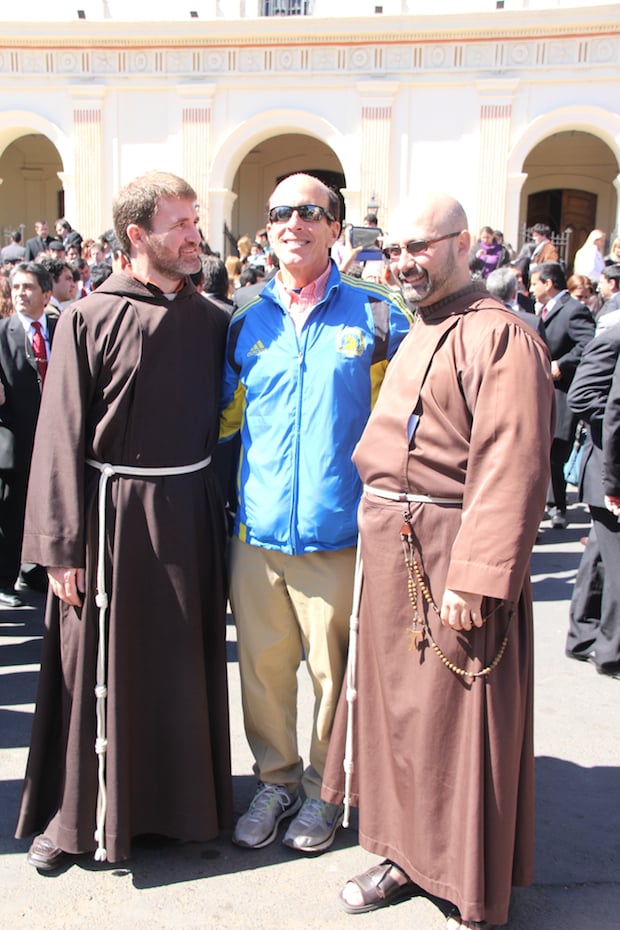
Marcos and Biera then took me for a hearty lunch at the famous Lido Bar, where we sat at the c. 1940s counter next to a Senator, who, like everyone else, was happy to talk with the patrons about the day’s events. We ventured to an open-air market, where a Paraguayan-American family introduced themselves. The dad yelled out “Boston Strong,” when he saw my marathon jacket.
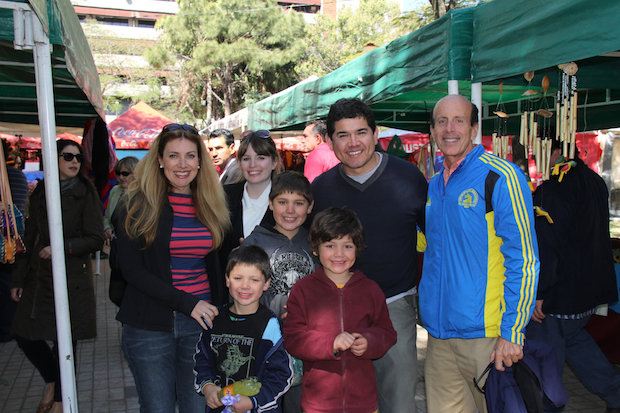
Our last stop was at a museum, La Casa de la Independencia (Independence House), which commemorates Paraguay becoming free from the Spanish Crown in May, 1811. That night, we celebrated at one of the best Italian restaurants I’ve ever visited, La Trattoria Tony. I had eaten there earlier in the week and asked to return to see another new friend, the owner/chef, and to experience first-class cuisine again.
Our Paraguayan host at the restaurant introduced us to a young Senator, who had studied at American University in DC, as he walked to greet the owner/chef in the open air kitchen. I watched as people intermingled warmly among the various tables, as they would at Café Milano in Georgetown. Whether Washington or Asunción, I knew that a popular Italian restaurant was a safe bet, but to be honest, I would prefer La Trattoria Tony to any Washington Inaugural Ball.
Joe Findaro is a lawyer/lobbyist in Washington, DC, with the firm Akerman Senterfitt, and a father of three who lives in Vienna. He hopes to return to Paraguay in the near future.

